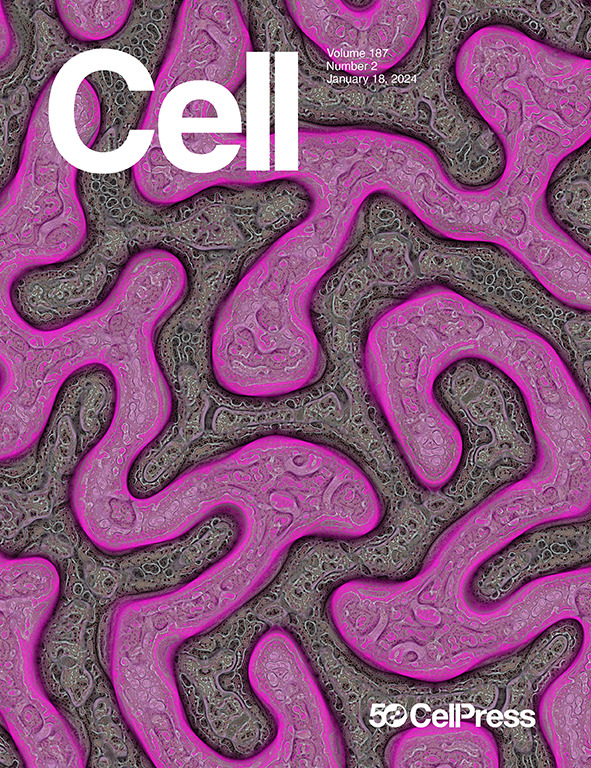蝙蝠海马体中非常大的环境的碎片重放
IF 42.5
1区 生物学
Q1 BIOCHEMISTRY & MOLECULAR BIOLOGY
引用次数: 0
摘要
海马体对记忆至关重要。记忆巩固被认为是由海马体对先前经历轨迹的“重放”所支持的。然而,我们尚不清楚大脑是如何在非常大的自然环境中重放长空间轨迹的。在这里,我们研究了在200米长的隧道中长时间飞行的蝙蝠的海马体。我们发现,在睡眠和飞行之间清醒的休息期间,有许多时间压缩的重播序列,类似于啮齿动物探索小环境。每个神经元根据它们的多个位置场在每次重播中触发多次。令人惊讶的是,重播是高度碎片化的,描绘的短轨迹片段只覆盖了环境大小的6%,这与覆盖了大部分环境的小型设置的重播不同。这种碎片化的重放可能反映了重放距离的生物物理或网络限制,并可能促进海马-新皮层通信的记忆分块。总的来说,海马体在非常大的环境中的重播与记忆再激活的经典概念完全不同,这对自然的、现实世界环境中的海马体网络机制具有重要意义。本文章由计算机程序翻译,如有差异,请以英文原文为准。

Fragmented replay of very large environments in the hippocampus of bats
The hippocampus is crucial for memory. Memory consolidation is thought to be subserved by hippocampal “replays” of previously experienced trajectories. However, it is unknown how the brain replays long spatial trajectories in very large, naturalistic environments. Here, we investigated this in the hippocampus of bats that were flying prolonged flights in a 200-m-long tunnel. We found many time-compressed replay sequences during sleep and during awake pauses between flights, similar to rodents exploring small environments. Individual neurons fired multiple times per replay, according to their multiple place fields. Surprisingly, replays were highly fragmented, depicting short trajectory pieces covering only ∼6% of the environment size—unlike replays in small setups, which cover most of the environment. This fragmented replay may reflect biophysical or network constraints on replay distance and may facilitate memory chunking for hippocampal-neocortical communication. Overall, hippocampal replay in very large environments is radically different from classical notions of memory reactivation—carrying important implications for hippocampal network mechanisms in naturalistic, real-world environments.
求助全文
通过发布文献求助,成功后即可免费获取论文全文。
去求助
来源期刊

Cell
生物-生化与分子生物学
CiteScore
110.00
自引率
0.80%
发文量
396
审稿时长
2 months
期刊介绍:
Cells is an international, peer-reviewed, open access journal that focuses on cell biology, molecular biology, and biophysics. It is affiliated with several societies, including the Spanish Society for Biochemistry and Molecular Biology (SEBBM), Nordic Autophagy Society (NAS), Spanish Society of Hematology and Hemotherapy (SEHH), and Society for Regenerative Medicine (Russian Federation) (RPO).
The journal publishes research findings of significant importance in various areas of experimental biology, such as cell biology, molecular biology, neuroscience, immunology, virology, microbiology, cancer, human genetics, systems biology, signaling, and disease mechanisms and therapeutics. The primary criterion for considering papers is whether the results contribute to significant conceptual advances or raise thought-provoking questions and hypotheses related to interesting and important biological inquiries.
In addition to primary research articles presented in four formats, Cells also features review and opinion articles in its "leading edge" section, discussing recent research advancements and topics of interest to its wide readership.
 求助内容:
求助内容: 应助结果提醒方式:
应助结果提醒方式:


